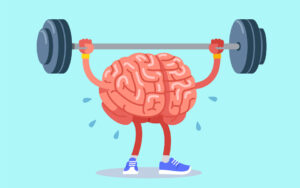When high demands stretch employees skinny, it is not a surprising consequence that they often find it challenging to reserve time for the weekly company yoga session. If we consider the reports of Towers Watson’s Global Workforce Survey or Gallup’s Global Workplace Report about employee engagement we can see convergence in the factors that have the most to do with engaging the workforce. Both reports suggest that there is a specific person in our organization who has the largest impact on how long an individual works for us. This person is the Team Leader, the direct supervisor. The surveys cover many of the key factors that determine workplace engagement, including the ability to do what they are best at, the availability of skill-enhancing jobs and the interest shown by the senior executives in employee well-being.
We have known about these factors for many years now, and we still buy table soccers, dye meeting rooms, introduce LTIs or introduce company kinder-gardens. In fact, none of these were reported by the workers as the main motivating factor at work. Don’t take it wrong, while fruit days, yoga, and resilience sessions are well-intended and can be meaningful to decrease the risk of voluntary leave, organizations shouldn’t use them as quick fixes to cover up deeper issues in the workplace culture. The main problem with these types of initiatives is that they do not increase the quality of leadership, as they are not in the control of the direct manager. On the other hand, having better managers would increase the chances of retaining our workforce longer.
When it comes to developing them we mainly choose one of two dinousaurs:
- Either put the managers in a classroom and bombard them with much information for one to three days,
- Or use an e-learning platform and let them customize their learning experience. And bombard them with even more information for a lot longer than 3 days.
E-learning is so old school that even Moses had downloaded information to a tablet from the cloud.
Training is a good option to cover the not knowing-knowing gap, in case we have a knowledge deficit. For example, we can learn (download information) about motivational theories or giving constructive feedback. To confess, I very seldom meet a manager who does not know enough about e.g. managing people. This suggests to me that there is a much bigger gap between knowing and doing. Training and leadership development programs revolve around a false assumption: if managers know it then they will do it. We all can witness that it is not true, they fail to bridge the knowing-doing gap. No training can help the manager apply the knowledge in the workplace. Mainly due to the fact that he is distracted from work to learn and he is left alone with the human brain’s poor association capability to apply that abstract knowledge.
The missing link of turning knowledge into action is to support them in changing behaviour. It’s okay if we help them refresh their knowledge but we also have to design programs, processes which support the implementation of that knowledge. E.g.:
- it is more efficient to work on the actual workplace dilemmas and situations of the managers, becoming more and more effective in solving e.g. motivational or conflict situations.
- build on their talents and uniqueness instead of fixing weaknesses. You may want to work in thematic workshops, and combine them with follow-up coaching sessions where everyone works on their own problems and help them put ideas into practice.
- Problems arise at the workplace and not in the classroom. You may want to provide the on-the-job support. For example, Act2Manage app provides instant tips for the most common leadership dilemmas and situations in about 3-5 minutes, helping change behaviour in-situ.
- Multiple types of interaction, built into a process, at varying frequencies ensure that managers change their behaviours and habits.
To my experience a typical process takes 6-9 months for us, but it requires only 8 hours of time investment per month from the leader. It’s not a net 8 hours, as we work with them on their dilemmas that they would have to solve anyway. I know that there has to be a way to measure the return on investment, the impact. Act2Manage is designed to measure the impact. It helps follow the progress, the extent of behaviour change and the ROI. It can tell a lot more about the efficiency than a happy sheet asking whether the cookies at the training were delicious or the venue was cool. Finally, the ultimate winners are the employees as they will have better managers who can keep them engaged and productive.
Act2Manage Application
An interactive, gamification-based, practice-oriented leadership development application that provides immediate help and enables follow-up to the most common dilemmas.






